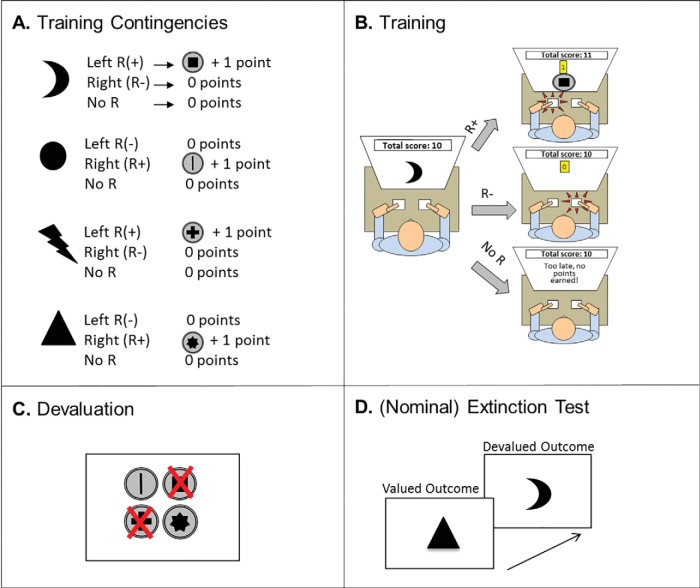Figure 5.
Task Design for Experiment 2. Panel A lists the training contingencies, with four symbols signaling which key needs to be pressed to earn a fictitious coin that was worth points. The stimulus–outcome assignment was counterbalanced across participants; and the pictures used as discriminative stimuli versus outcomes (on the surface of the coins) were reversed for half of the participants. Panel B shows an example of a trial on which the discriminative stimulus signals (the moon symbol) that the left key needs to be pressed to earn a coin with a square symbol. Panel C: The outcome-devaluation manipulation consisted of instructing participants (at the start of each test block) that two coins are still worth points (the still-valuable outcomes), but that the two outcomes with a cross superimposed would now lead to deduction of points from the total score (the devalued outcomes). Across the four test blocks, each outcome was devalued two times. Panel D: During the nominal extinction test, the discriminative stimuli were again shown on the screen in random order, and in rapid succession, while the participants had the opportunity to press the two keys. During this brief test, no outcomes were presented, but participants were instructed that they were still earning (and losing) points, and that their total score would determine their chance to earn cinema tickets at the end of the experiment.

